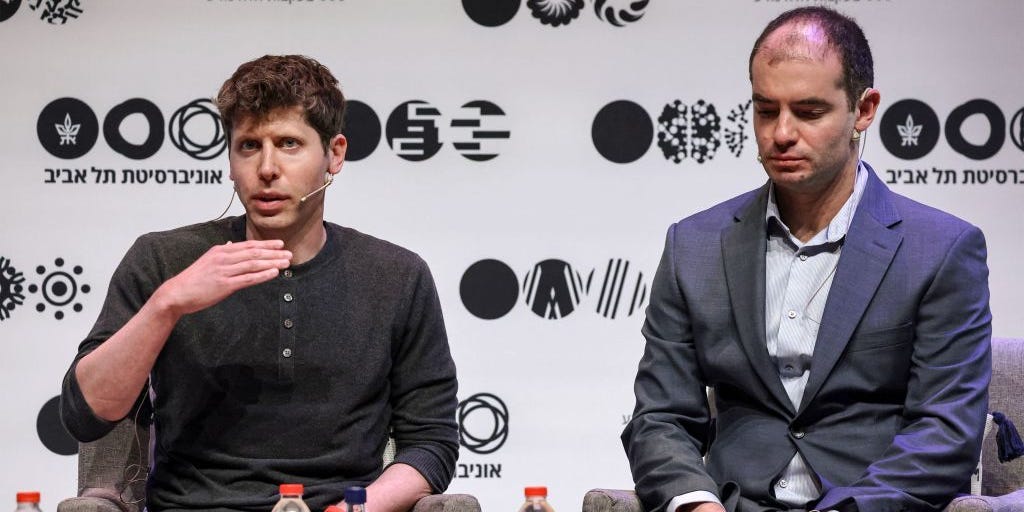- A new WSJ report sheds light on the internal tensions at OpenAI amid CTO Mira Murati’s exit.
- The report said execs worried the company could collapse when cofounder Ilya Sutskever left in May.
- Since then, more execs departed and employees shared concerns over rushed product launches and safety testing.
Questions are swirling about what exactly has been going on at OpenAI amid a string of high-profile executive departures including former CTO Mira Murati.
A new report from The Wall Street Journal published Friday sheds light on the behind-the-scenes tension that has been building at the AI company in the 10 months since CEO Sam Altman returned after his brief ousting.
Murati’s departure as CTO earlier this week sent shockwaves across the industry, and two other OpenAI executives announced the same day that they were also leaving.
The Journal’s report details the concerns that some in the company have voiced over the increasing focus on shipping AI products quickly and the reported shift toward being a more traditional for-profit-focused company.
It also reveals that executives worried about a potential collapse after OpenAI cofounder Ilya Sutskever left in May, and their attempts to woo the AI researcher back before reconsidering the offer.
An OpenAI spokesperson told Business Insider that the company disagrees with the report’s characterizations. However, the company said it recognizes that “evolving from an unknown research lab into a global company that delivers advanced AI research to hundreds of millions of people in just two years requires growth and adaptation.”
The spokesperson added that it is deeply committed to its mission and is “proud to release the most capable and safest models in the industry.”
OpenAI execs braced for a possible collapse after losing a cofounder in May
The circumstances around Sutskever’s departure have been largely shrouded in mystery, but the Journal’s report highlights that it was a large blow to the company and not something executives initially wanted.
Sutskever resigned from his role as chief scientist in May, six months after the return of Altman. Sutskever, who was reportedly one of the board members who voted to fire Altman, hadn’t been to work since apologizing for his role in the ousting.
Jan Leike, who co-led the company’s superalignment group with Sutskever, quit as well, and their team was dissolved. While the company later announced a new safety committee, OpenAI executives, including Murati and President Greg Brockman, worried the resignations could lead to more departures and the company could collapse, according to the Journal.
Murati and Brockman tried to convince Sutskever to come back, including visiting his home and bringing him letters from other employees, the report said. Altman also visited and told him that he was disappointed that a role for the OpenAI cofounder hadn’t been figured out, according to the report.
It sounds like the efforts were working. Sutskever was reportedly coming around to the idea of returning, but the potential offer was rescinded in a phone call from Brockman, the report said — a solution to exactly where Sutskever would fit in amid the new company structure hadn’t been found.
Murati declined to comment when contacted by Business Insider. Sutskever did not immediately respond to BI’s request for comment.
Murati reportedly delayed GPT-4o features amid a rush to launch new products
Past and current OpenAI employees also told the Journal that product announcements and safety testing have been rushed amid concerns that the company was losing its edge over competitors in the AI space.
A number of OpenAI employees who have left have also publicly spoken out about what they described as a lack of proper safety guardrails in place.
However, the Journal’s reporting offers some fresh details about Murati’s involvement as CTO amid the crunch to ready and ship new products.
GPT-4o was one of the rushed products and Murati repeatedly delayed some of the planned feature launches, like search and voice interaction, over concerns they weren’t ready, according to the report. ChatGPT’s Advanced Voice Mode just started rolling out to users this week after being announced more than four months ago.
The CTO resigned on Wednesday, announcing that she had “made the difficult decision to leave OpenAl” in order to “create the time and space to do my own exploration.”
The company sent a note to investors after Murati’s departure in an attempt to reassure them.
OpenAI’s chief financial officer, Sarah Friar, told investors that while leadership changes aren’t easy, the company remains “laser-focused on bringing AI to everyone and building sustainable revenue models,” CNBC reported.
OpenAI is currently in the process of raising billions more at a potential $150 billion valuation. The CFO reportedly said in the note that the funding round should be ready to close next week.
Read the full article here
















